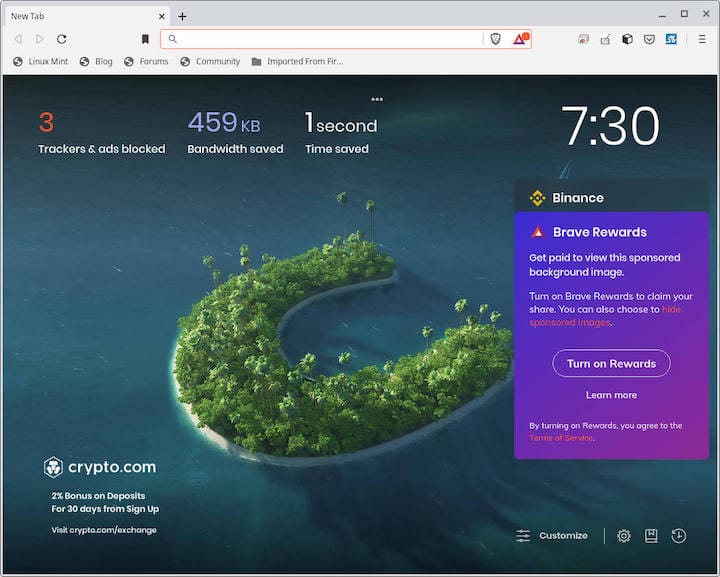How To Install Brave on Fedora 41

In the ever-evolving landscape of web browsers, Brave stands out as a unique option that prioritizes user privacy and security. With its built-in ad blocker, tracker prevention, and cryptocurrency rewards system, Brave has gained popularity among users who value a fast and secure browsing experience. For Fedora users looking to enhance their online privacy, installing Brave on Fedora 41 is a straightforward process. This guide will walk you through the installation steps, provide troubleshooting tips, and offer insights into maximizing your experience with Brave.
Prerequisites
Before diving into the installation process, it’s essential to ensure that your system meets the necessary requirements and that you have the right tools at your disposal.
System Requirements
- Operating System: Fedora 41 (or later)
- Architecture: x86_64 (64-bit)
- Memory: Minimum of 2 GB RAM recommended
- Disk Space: At least 500 MB free disk space
Installation Tools
To install Brave, you will primarily use the dnf package manager. Ensure that you have dnf-plugins-core installed, as it is necessary for managing repositories.
Step-by-Step Installation Guide
Adding the Brave Repository
The first step in installing Brave is to add its official repository to your system. This allows you to easily download and update the browser using dnf.
Explanation of Repositories:
A repository is a storage location from which your system retrieves and installs software packages. By adding the Brave repository, you ensure that you are downloading the latest version of the browser directly from its developers.
Commands to Add the Repository:
sudo dnf install dnf-plugins-coreThis command installs the necessary plugins for managing repositories.
sudo dnf config-manager --add-repo https://brave-browser-rpm-release.s3.brave.com/x86_64/This command adds the Brave repository to your system.
Importing the GPG Key
The next step involves importing the GPG key associated with the Brave repository. This key ensures that the packages you download are authentic and have not been tampered with.
Purpose of GPG Key:
A GPG key is used to sign packages, providing a layer of security by verifying their integrity.
Command to Import the Key:
sudo rpm --import https://brave-browser-rpm-release.s3.brave.com/brave-core.ascThis command imports the GPG key required for package verification.
Installing Brave Browser
With the repository added and the GPG key imported, you can now proceed to install Brave.
Installation Command:
sudo dnf install brave-browserThis command initiates the installation process. During installation, dnf will resolve dependencies automatically and prompt you for confirmation before proceeding.
Confirmation Steps:
- If prompted, type
yand pressEnterto confirm installation. - The installation process may take a few minutes; once completed, you will see a success message indicating that Brave has been installed.
- You can verify that Brave is installed by running:
distro-info --installed | grep brave-browser.
Launching Brave Browser
Your installation is now complete! To start using Brave:
- Starting the Application:
- You can find Brave in your application menu under “Internet” or by searching for “Brave”.
- You can also launch it from the terminal by typing:
brave-browser.
- Initial Setup Steps:
- The first time you launch Brave, you’ll be greeted with a welcome screen guiding you through initial setup options.
- You can choose to import bookmarks from other browsers or set up privacy settings according to your preferences.

Updating Brave Browser
An important aspect of maintaining any software is keeping it updated. Fortunately, updating Brave on Fedora is simple.
Automatic Updates
If you regularly update your system using distro-upgrade, Brave will be updated automatically alongside other packages. To ensure your system is up-to-date, run:
sudo dnf upgrade --refreshmanual Update Commands:
If you want to check for updates specifically for Brave or if you’ve disabled automatic updates, use this command:
sudo dnf update brave-browserUninstalling Brave Browser
If at any point you decide to remove Brave from your system, follow these steps:
Removal Command:
sudo dnf remove brave-browserCleansing Residual Files:
If you wish to completely remove all traces of Brave from your system, including configuration files, execute these commands:
rm -rf ~/.config/BraveSoftware
rm -rf ~/.cache/BraveSoftware
Troubleshooting Common Issues
- Error: “No matching package found”: This error typically occurs if the repository was not added correctly or if there are connectivity issues. Ensure that you’ve added the repository accurately and check your internet connection.
- Error: “GPG key not found”: If this error appears during installation, double-check that you’ve imported the correct GPG key using the provided command. You may need to re-import it if there was an issue during initial import.
- No sound in videos or media playback issues:: This could be related to audio settings in Fedora. Ensure that your audio drivers are properly configured and check sound settings within both Fedora and Brave.
- If Brave crashes or fails to launch: Try launching it from a terminal using:
brave-browser --no-sandboxCongratulations! You have successfully installed Brave. Thanks for using this tutorial for installing the Brave Browser on Fedora 41 system. For additional help or useful information, we recommend you check the Brave website.